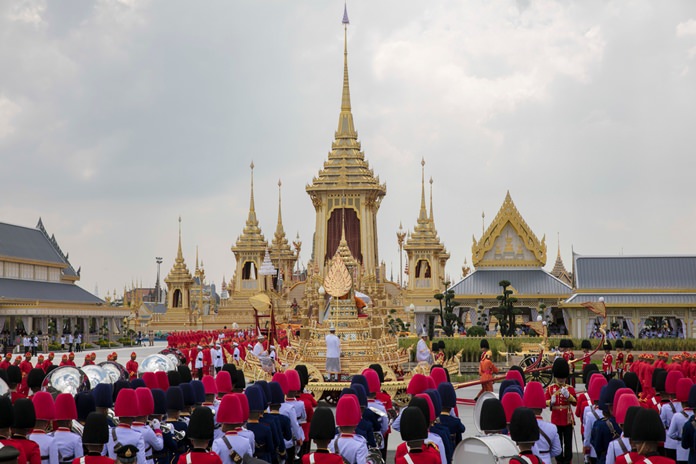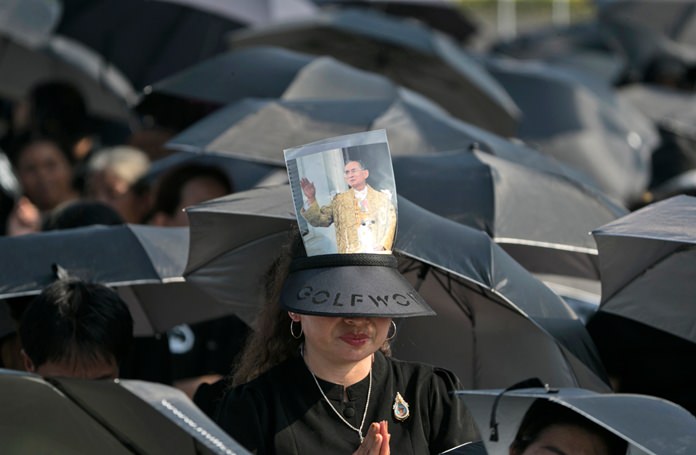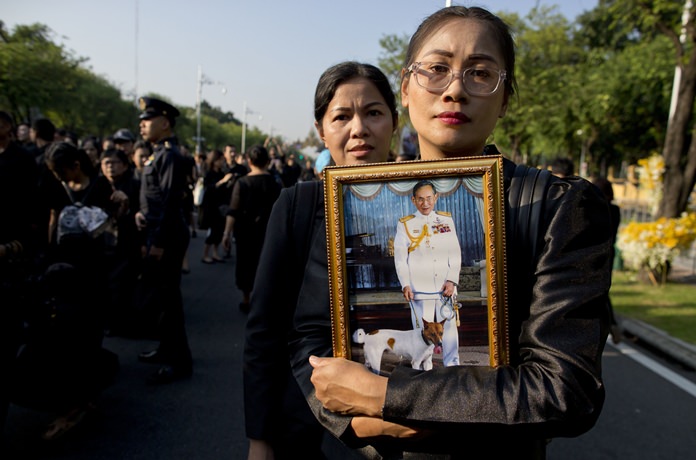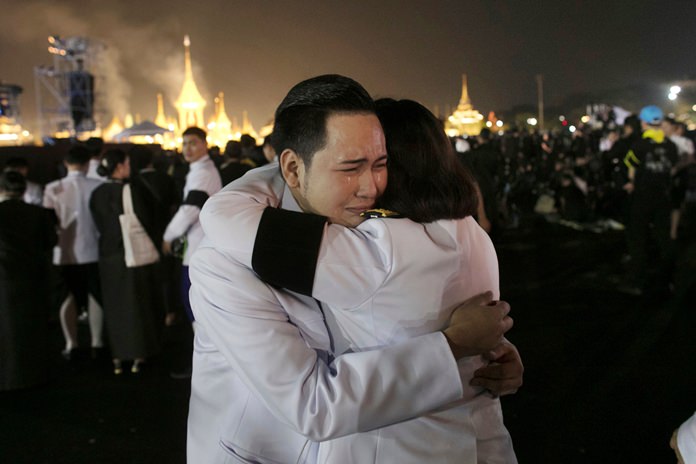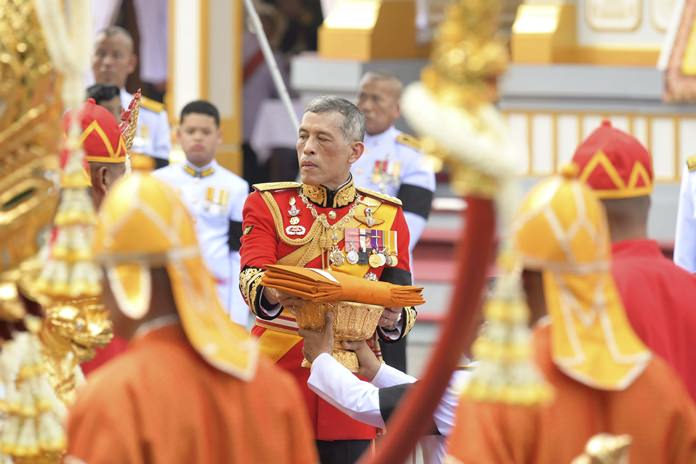
Bangkok (AP) — With solemn faces and outright tears, Thais said farewell to their king and father figure with elaborate funeral ceremonies that cap a year of mourning and are steeped in centuries of tradition.
Support Pattaya Mail – Click Here
Smoke rose just before midnight Thursday from the spectacularly ornate crematorium built in the year since HM the late King Bhumibol Adulyadej died. On Friday morning, his son, current King Maha Vajiralongkorn, participated in a religious ceremony to move his father’s ashes to special locations for further Buddhist rites.
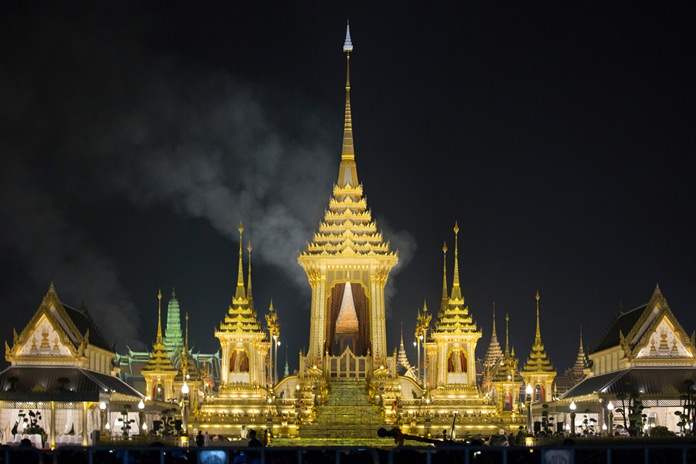
The five-day funeral rites began Wednesday with HM King Vajiralongkorn performing Buddhist merit-making rites and on Thursday, a ceremonial urn representing King Bhumibol’s remains were transferred from the Dusit Maha Prasad Throne Hall to the crematorium in somber processions involving thousands of troops, a golden palanquin, a gilded chariot and a royal gun carriage.
The urn, placed under a nine-tiered white umbrella and accompanied by a palace official, was hoisted into the main chamber of the golden-spired crematorium as monks chanted, traditional instruments wailed and artillery fired in the distance. The King then climbed the red-carpeted steps to light candles and incense in honor of his father.
On a day designated a public holiday in the kingdom, tens of thousands of mourners dressed all in black watched the processions from streets in Bangkok’s royal quarter and millions more watched broadcasts aired live on most TV stations and shown at designated viewing areas across the country.
Before dawn, 63-year-old Somnuk Yonsam-Ar sat on a paper mat in a crowd opposite the Grand Palace. Her granddaughter slept in her lap and her husband rested his head against a metal barrier. The family came from the coastal province of Rayong, where they run a food stall.
Somnak waved a fan to cool herself but said she was not tired.
“I feel blessed to be able to sit here, and be part of this,” she said. “It’s an important day for us.”
The ceremonial urn was at the center of Thursday’s processions, including one led by His Majesty the current king when the golden container was placed upon the Great Victory Chariot. Built in 1795 and made of gilded and lacquered carved wood, the chariot has been used to carry the urns of royal family members dating to the start of the Chakri dynasty.
As the chariot, pulled by hundreds of men in traditional red uniforms, passed the mourners lining the parade route, they prostrated themselves, pressing their folded hands and head on the ground in a show of reverence.
In the evening, a symbolic cremation was witnessed by royalty and high-ranking officials from 42 countries. Orange-robed monks chanted Buddhist prayers to bless King Bhumibol’s spirit as the official guests waited to walk into the crematorium to make offerings of flowers made from sandalwood.
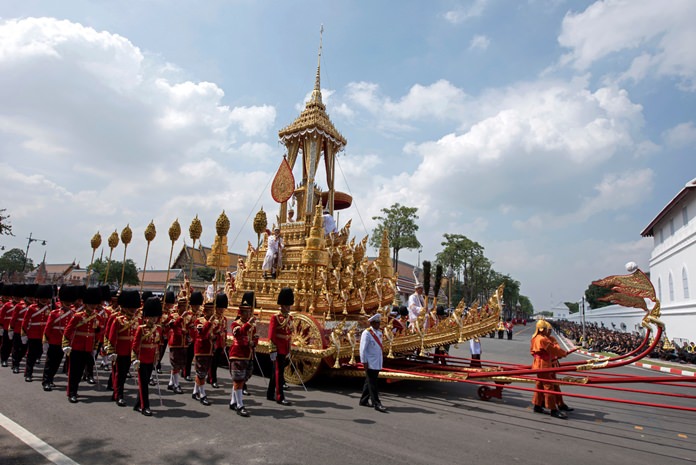
TV stations broadcast classical masked dances and traditional puppet shows as the country awaited word that the cremation had taken place inside the edifice built to represent mystical Mount Meru, where Buddhist and Hindu gods are believed to dwell.
Further rites then began Friday morning and involved transferring King Bhumibol’s ashes and relics to the Grand Palace and the Temple of The Emerald Buddha for further Buddhist rites. They are set to be enshrined in spiritually significant locations on the last day of the funeral.
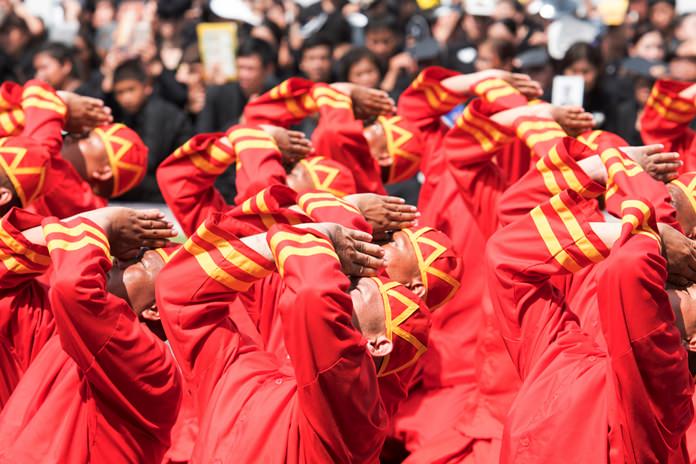
The funeral is by design an intensely somber event, but also rich in history and cultural and spiritual tradition.
Boonjerd Buasawat, a 61-year-old fruit vendor from the resort island of Phuket, waited near the cremation site since midday Wednesday and slept there overnight.
“I want to be here together with a group of people who dearly love their king,” he said. “Our love won’t die until we too pass and follow him.”
Thais braved tropical heat and torrential monsoon rains to secure street-side vantage points to witness the funeral.
Thousands of police and volunteers were on hand to ensure order and entry into the historic royal quarter was tightly controlled.
